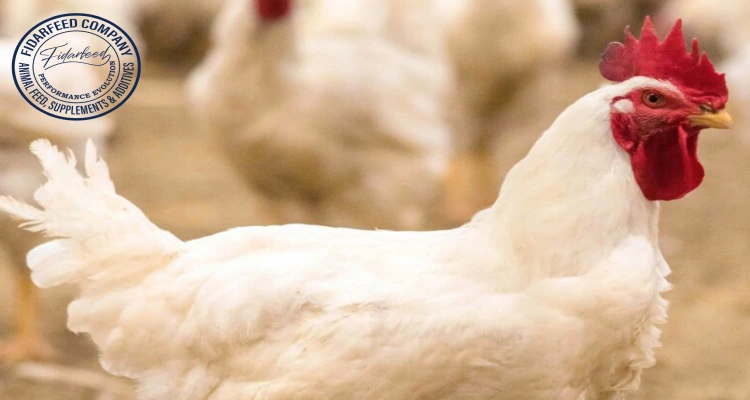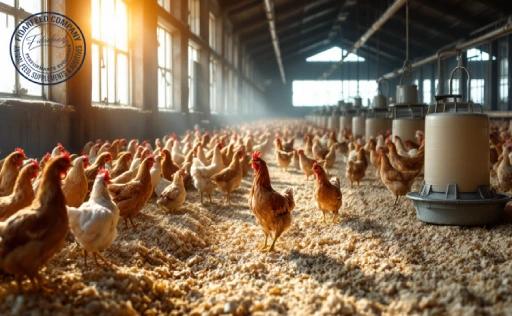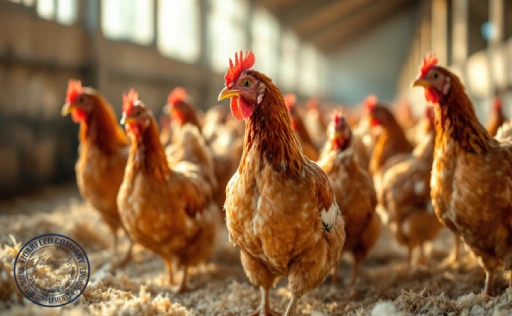
Cobb 500 is the broiler breeder’s first choice—and for good reason. This high-performance bird continues to dominate the poultry industry, not by chance, but by design. Whether you’re a seasoned integrator or a newcomer looking to build your reputation, Cobb 500 offers unmatched efficiency, growth, and profitability.
Why Cobb 500 Is the Broiler Breeder’s First Choice
The success of any poultry business starts with choosing the right bird. Cobb 500 stands out for its balanced characteristics: rapid growth, excellent feed conversion ratio (FCR), strong immunity, and adaptability. These traits make it ideal not only for large-scale operations but also for smaller farms aiming to compete.
Poultry breeders are drawn to this broiler line because of its consistent performance. It’s not just about weight gain—it’s about predictability, profitability, and sustainability. When you can rely on a bird to deliver uniform results batch after batch, it reduces uncertainty and increases your bottom line.
Learn more about: Active Probiotic Yeast for Poultry
Cobb 500 Genetics: Built for Broiler Breeding Success
The genetic foundation of Cobb 500 is the result of decades of selective breeding. Cobb’s global breeding program focuses on producing a bird that delivers meat yield, robustness, and efficiency.
Genetically, this broiler line excels in:
-
Breast meat yield (often exceeding 20% of live body weight)
-
High survival rates
-
Uniformity across flocks
-
Low maintenance requirements
This genetic edge means less variability in your operation—and more control over your results.
Broiler Feed Efficiency: How Cobb 500 Lowers Production Costs
Feed represents the largest cost in broiler production. With its impressive FCR of 1.5 or better, farmers can produce more meat with less feed. That’s not just good for your finances—it’s essential in markets where feed prices fluctuate.
Learn more about: Mastering the Basics: A Comprehensive Broiler Breeder Management Guide
Cobb 500 typically reaches market weight (2.5 kg or more) in just 35–42 days depending on conditions. This fast growth enables quicker turnover and higher profits per production cycle. Whether you’re growing for local consumption or export markets, speed matters.
Adapting to Your Environment: Breed Resilience in Action
This broiler is known for its adaptability. From tropical humidity in Southeast Asia to the dry conditions of the Middle East or cold winters in Eastern Europe, Cobb 500 performs reliably.
Learn more about: Ross 308 vs. Cobb 500: Which Broiler Breed is Right for You?
Thanks to its robust genetic profile and stress resistance, this broiler line thrives in both open-sided houses and modern climate-controlled systems. Even in areas where infrastructure is limited, this broiler breed maintains respectable productivity and health outcomes.
Building Healthier Flocks with Cobb 500’s Natural Resistance
A healthy flock reduces the need for expensive medications and minimizes downtime. This breed has been bred with strong resistance to common diseases such as:
-
Infectious Bursal Disease (IBD)
-
Newcastle Disease
-
Avian Influenza
Learn more about: how to breed broiler chickens
Its naturally strong immunity, coupled with a well-managed vaccination program, makes Cobb 500 a reliable choice for breeders who want peace of mind and reduced mortality rates.
Boosting Profitability Through Smart Breed Selection
Here’s where it gets practical. The cost-per-kilogram of meat produced is significantly lower with this line. Why?
-
Less feed consumed
-
Shorter grow-out period
-
Lower mortality
-
Higher livability
-
Uniformity that simplifies processing
For small-scale breeders, this efficiency means staying competitive. For large-scale integrators, it means scaling profitably.
On the Ground: Breeder Results That Speak Volumes
A medium-sized poultry farm in Brazil reported a 15% increase in profitability within six months of switching to the breed. Meanwhile, a smallholder cooperative in Nigeria reduced their feed expenses by 12% and cut production time by five days per cycle.
Learn more about: Guide to Choosing the Best Broiler Breed: Cobb 700 vs Cobb 500
These results show that the shift to Cobb 500 wasn’t just about genetics—it was about choosing a system that supports long-term success.
Feed Strategies to Unlock Top Performance
Even the best bird needs the right diet. This broiler responds well to:
-
High-energy starter feed (22–24% protein)
-
Balanced grower diets (20–21% protein)
Learn more about: Cobb Chicken Breeds: An Overview
-
Proper vitamin and mineral supplementation
Adding probiotics or natural performance enhancers like yeast or enzymes can further boost gut health and growth rates. Always work with a poultry nutritionist to tailor feed according to your local ingredient availability.
Avoid These Pitfalls with High-Performance Broilers
-
Overfeeding: Cobb 500 grows quickly, but overfeeding can lead to leg problems or excess fat.
-
Poor ventilation: Fast-growing birds generate heat—ensure adequate airflow.
-
Skipping vaccinations: Strong immunity still needs vaccine support for optimal flock health.
-
Lack of uniformity in lighting and temperature: this broiler line is sensitive to environmental consistency.
Learn more about: Broiler Chicken Health at Risk? Know the Signs of Dysentery
Avoid these missteps, and you’ll see better flock health and higher returns.
How This Breed Stacks Up Against the Competition
While breeds like Ross 308 or Hubbard Flex are also popular, Cobb 500 often outpaces them in:
-
Feed-to-meat conversion
-
Market flexibility (ideal for whole bird and cut-up sales)
-
Uniformity, which simplifies processing and packaging
Learn more about: What Causes Sudden Death in Broilers: Key Factors and Solutions
For breeders prioritizing performance and predictability, this breed typically leads the pack.
Final Thoughts: Why the Smart Money Stays with Cobb 500
Cobb 500 isn’t just a bird—it’s a smart business decision. From feed efficiency and rapid growth to robust health and high yield, this broiler breed offers everything a modern poultry breeder needs.
Whether you’re just starting out or scaling a large operation, choosing this high-performance breed means you’re investing in a line that delivers consistent, high-quality results.
Have you worked with this broiler line before? Are you considering it for your next production cycle? Drop your thoughts in the comments, ask questions, or share your experiences—we’d love to hear from you!








